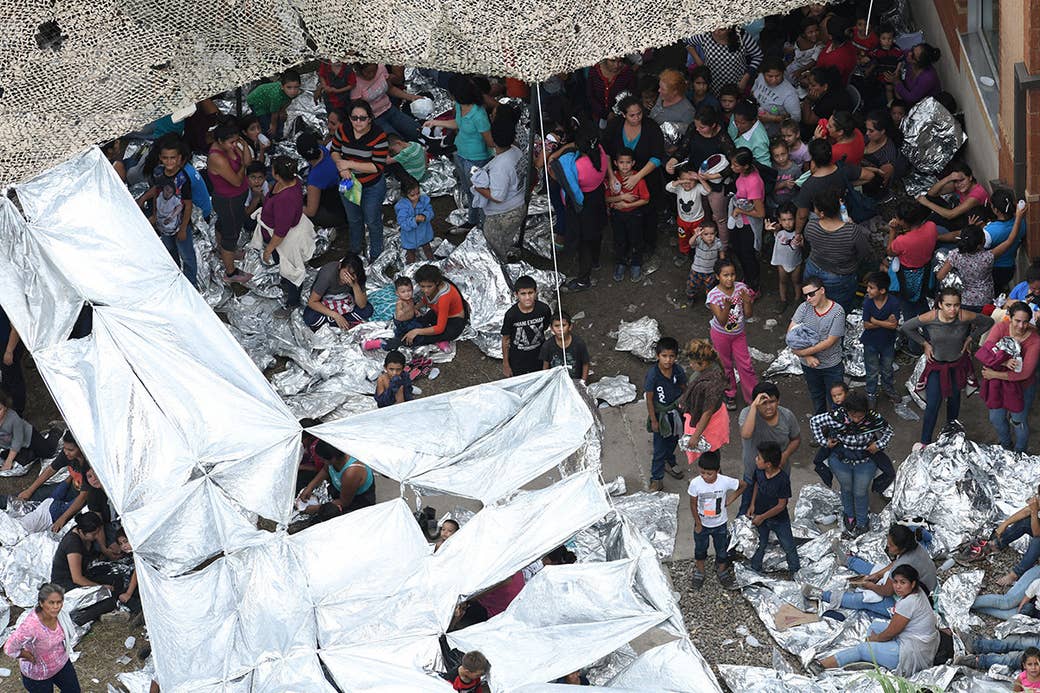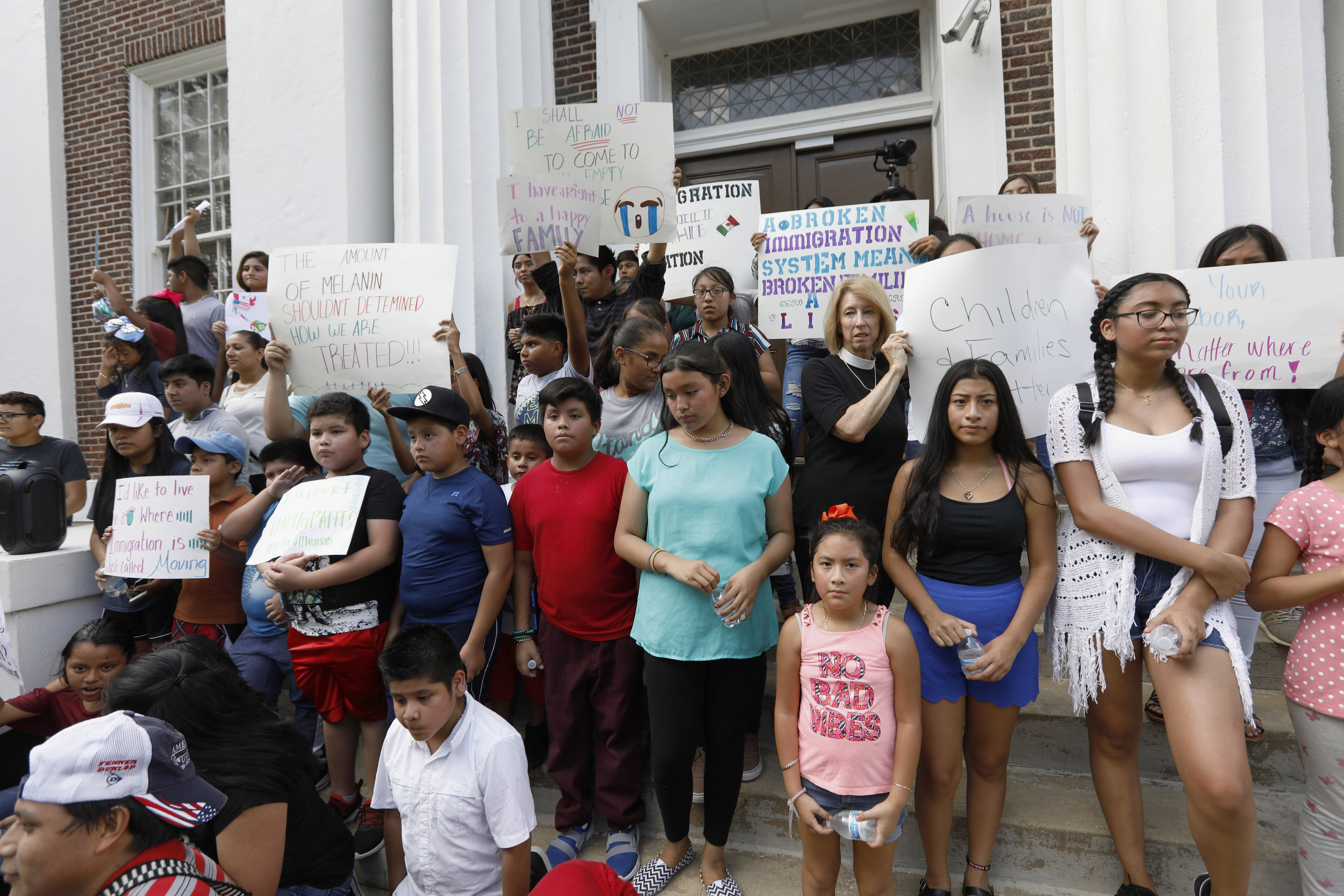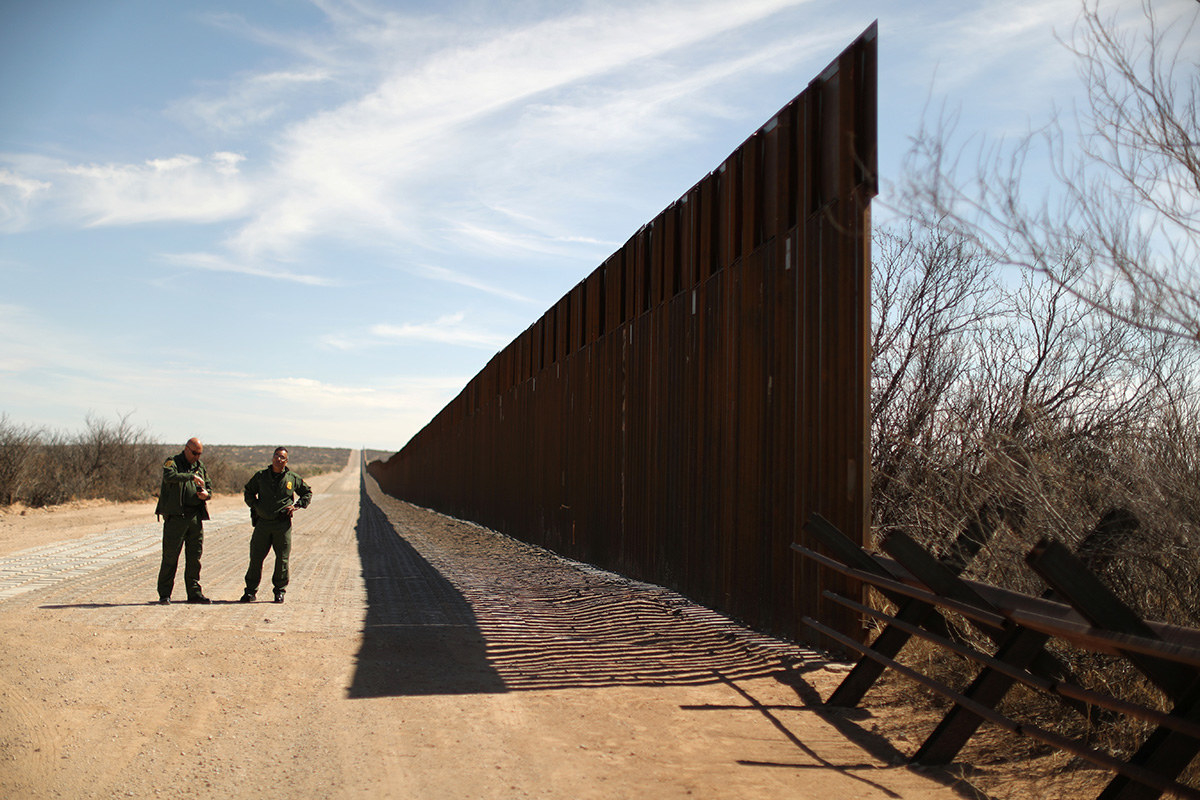On the day James Schwab realized the extent of the US government’s hard turn on immigration under President Donald Trump, he was sitting in a police station in Santa Cruz, the coastal city in California known for its surf spots and liberal leanings. It was Feb. 13, 2017.
Immigration and Customs Enforcement, which employed Schwab as a spokesperson based in San Francisco, had planned to join up with local cops to arrest 10 people suspected of ties to an affiliate of the MS-13 gang.
Schwab, then less than two years into the job, expected a routine gang takedown run by agents from Homeland Security Investigations, or HSI. The lesser-known wing of ICE typically focused on criminal cases — smuggling, document fraud, that kind of thing.
But the atmosphere in the station that morning grew tense. The regional ICE leaders there, Schwab said, began to receive phone calls that left them visibly stressed. Later, he heard one senior agent describe the order they had been given: “We need to take collaterals.”
“Collaterals” is agency slang for undocumented immigrants who cross paths with agents because they are in the same home or business as the target of an ICE action. Under President Obama, agents had been told to mostly refrain from such arrests in order to concentrate on threats to public safety and to avoid striking terror in immigrant communities across the country.
Looking back, Schwab said, the events of that morning were one of the first signs that his job, and his agency, had changed. Over the next year, he said, there were more such signs, dictates that garnered headlines for their perceived harshness toward immigrants or anyone — including mayors and governors — who disagreed with the agency’s aggressive new enforcement stance.
Schwab was called upon to publicly highlight crimes committed by immigrants. He was also asked, he said, to issue press releases criticizing elected leaders of so-called sanctuary cities and states that refused to turn over immigrants to the federal government for deportation.
“At the time, I just did it,” Schwab said of his public relations job. “I didn’t see the whole picture.” But eventually, he said, he came to feel that under the Trump administration, ICE “wasn’t about the humans,” it was “about being anti-immigrant and every statement we made, every minute that we spent on our statements, were about showing how immigrants have negatively influenced our country and communities.”
Now, as President-elect Joe Biden prepares to take office, ICE, which is responsible for immigration enforcement and deportations inside the nation’s borders, is at a crossroads, its reputation in tatters and the scope of its mission in question. The agency has lost the faith of many Americans. According to a Pew Research Center poll earlier this year, ICE had the lowest favorability rating of the 10 federal agencies it asked about.
Biden has said he plans to halt all deportations for 100 days and has promised a new approach to immigration enforcement. Last week, Biden’s nominee to run the Department of Homeland Security, Alejandro Mayorkas, signaled the new tone: “We must stop vilifying these communities,” he said. “We must bring to an immediate end the inhumane and unjust treatment of immigrants.” But what that change will look like remains to be seen. There are strong political headwinds on all sides: The union that represents ICE officers supported Trump in 2016; many progressives, meanwhile, revile the agency.
BuzzFeed News spoke with 12 current and former ICE officials who served during the Trump administration about their experiences and their thoughts about the future. Many, like Schwab, said the new president must find a way to correct the excesses of the past four years and restore public trust in the agency by revamping policies and tactics. But many also cautioned that it won’t be easy.
“It has been branded as a partisan agency. Law enforcement should be neutral, should be driven by policy and through fair and humane implementation of the law,” said one former ICE official, who served under both Obama and Trump. “Unfortunately, ICE put their MAGA hat on. They’re gonna try to take it off come January, but I don’t know how successful that will be.”

The list of controversial policies that came out of ICE under Trump is a long one.
ICE leaders advocated publicly for city leaders in sanctuary cities to be charged with crimes, and planned massive worksite raids, along with operations targeting undocumented immigrant families. Stories in local and national media of ICE deporting sympathetic characters, like a cancer nurse in Oakland, became commonplace. ICE arrested the potential adult sponsors who came forward to take care of unaccompanied children who had been in government shelters.
ICE officials also conducted operations targeting states and cities with sanctuary laws. When some mayors and governors refused to increase their cooperation with ICE, the agency paid for billboards with photographs of “wanted” immigrants in the same areas.
An executive order signed by Trump made it so nearly every undocumented immigrant became a priority for arrest. Not long after, ICE prosecutors were restricted from granting reprieves for certain immigrants facing deportation and ordered to review and potentially reopen previously closed cases, which was first revealed by BuzzFeed News through Freedom of Information Act requests.
Soon, the proportion of immigrants with no prior criminal convictions who were being arrested and placed into deportation proceedings began to shoot up.
That, along with a surge of immigrants at the border in 2019, led to the agency detaining people at record levels in private prisons and local jails, often in remote areas far from their family or others who could help them. There were allegations of inadequate medical care within the facilities. A government whistleblower detailed a string of incidents of bad patient outcomes, including two who were given the wrong drugs, and one immigrant who died after getting “grossly negligent” care, according to a document obtained by BuzzFeed News.
Comments by ICE leaders did little to help the perception of the agency. At different times, one ICE leader said family detention centers were like “summer camp” while another said undocumented immigrants should be afraid if they were in the country illegally.
Agency officials also publicly defended, and privately recommended, one of the Trump administration’s most controversial policies, the move to separate children from their parents at the border.
ICE, and its parent agency DHS, have also taken an aggressive stance with the media–at one point DHS investigators created “intelligence reports” about journalists who reported on leaked documents. Last week, ICE investigators issued a subpoena to BuzzFeed News demanding the news outlet reveal its sources. BuzzFeed News Editor Mark Schoofs rejected the demand, calling it “outrageous.”
“The whole agency changed a lot,” said one former lead ICE detention official who worked under both Obama and Trump. “It felt uncontrolled.”
She added that many in the agency were elated when Trump came in, and that there was “a feeling amongst some that law enforcement was finally a priority.” But preserving civil rights “got a lot harder.”

Ultimately, ICE was never able to reach the astronomical deportation numbers Trump promised. In fact, it didn’t even manage to match Obama’s. But what it lost in statistics it made up for in aggressive messaging coupled with controversial operations and policies.
Under Obama, the agency did not shy away from deporting people. In fact, some critics called President Obama the “deporter in chief” because of the huge numbers of people deported during the first years of his administration.
But criticism from immigrant advocates, along with unfavorable court rulings, led the Obama administration to alter a program of detaining and deporting undocumented immigrants arrested by local officials. Meanwhile, counties and states, such as California, began passing laws limiting jail cooperation with ICE.
In November 2014, DHS rolled out the “priority enforcement program,” in which local entities had the ability to simply notify ICE of a detainee’s release date after a fingerprint hit as opposed to holding them for longer than needed. At the same time, DHS leaders restricted who ICE would target for arrest to only those convicted of serious crimes, among other priorities. The changes led to a dramatic downturn in arrests.
To some on the ground charged with carrying out the program, the changes were problematic.
“If you went out and arrested someone who wasn’t a criminal, when you got back, you got in trouble. There was this fear: Crap, I’m going to get in trouble,” said one ICE official who works in the deportation enforcement wing of the agency.
When Trump took over, the restrictions issued by Obama were lifted.
“It made you more at ease. It was being able to do the job without any fear — that is the difference,” the official said.
In 2017, then acting ICE Director Thomas Homan, who won an award from Obama for his work, celebrated the shift saying that Trump had “taken the handcuffs” off ICE officers.
“ICE is doing their job to enforce the laws enacted by Congress, it shouldn’t apologize for it,” he told BuzzFeed News.
But if the goal was to get droves of “sanctuary cities” to come back on board with ICE and work with officials to deport people who were detained in local jails, that did not happen.
“Despite issuing a highly publicized executive order that significantly expanded the enforcement authority and leeway of ICE officers just five days after he took office, Trump has seen arrests and deportations idle, especially when compared to the peak Obama years,” wrote Muzaffar Chishti and Sarah Pierce in a Migration Policy Institute report. “This is due to significant resistance from state and local jurisdictions that have limited their cooperation with ICE.”
In its place, ICE conducted high-profile operations, like one in Mississippi in August 2019 that led to more than 600 arrests, the largest single-state workplace raid ever. The agency also spoke of going after entire families. Then-acting director Mark Morgan held a press conference in which he said such an operation would “send a strong message to those individuals contemplating coming here illegally not to do so.”

The operation was eventually delayed by Trump himself after negative publicity. Ultimately, the raid yielded just 18 arrests, but the publicity around it caused many immigrants to literally hide in their homes out of fear. Morgan, who got the ICE job after praising Trump on Lou Dobbs Tonight, had left for a role heading up US Customs and Border Protection by the time the results were revealed.
Morgan was one of five ICE leaders during the Trump administration, none of whom underwent Senate scrutiny and confirmation — a sign of how transient leadership was during the Trump years. One former ICE official who served during the Trump administration said agency leaders were often trying to please the White House, including senior adviser Stephen Miller, with policy proposals that would prove their willingness to carry out the president’s agenda.
“There was a constant demand for numbers and for new ideas. Getting tough and taking action to stop sanctuary cities, holding everyone accountable under the law. The agency became focused in service to, in my opinion, a xenophobic enforcement policy,” the former official said. “Immigration enforcement is contentious and difficult and it is easy to lose sight of the impacts you can have on communities and on people. That’s what happened under Trump — on steroids.”
In some cases, said one ICE official, some officers pushed the limits of the law. “We had officers who just stopped talking to their agency counsel. They took to heart Trump’s early messaging. They didn’t want or need their agency attorneys telling them that they couldn’t do something because it wasn’t in the law and would get us sued.”

Biden’s victory will almost certainly lead to a change in messaging. It is likely, many predicted, the agency will stop paying for billboards depicting “wanted” immigrants, for example. The agency’s deportation efforts will return to the background, and officers will almost assuredly be once again limited on who they should and should not arrest.
“In the first 100 days of my administration, no one, no one will be deported at all. From that point on, the only deportations that will take place are commissions of felonies in the United States of America,” he said in a March debate.
But these reforms and a return to the Obama-era version of the agency may not be enough to satisfy immigrant advocates who have long criticized those policies as well. The Democratic primary largely left unresolved sticky debates over immigration policy, such as how much ICE should push local jails to collaborate with them to arrest and deport people and what types of “felons” should be targeted for enforcement. Also left unaddressed was whether they should stop a policy that has been used by the Trump administration to expel people from the US citing the coronavirus pandemic.
And while the incoming administration can implement changes, it will still have a workforce that’s dedicated to a single mission: arresting and deporting undocumented immigrants.
“You have 7,000 officers who are tasked with removing people from the United States. You can’t tell them to stop working,” said John Sandweg, who headed up the agency during the Obama administration.
What’s more, many who favored a less aggressive approach are gone. Among them is James Schwab, the public relations official who was so shocked by the decision to “take collaterals” in Santa Cruz.
“I wish more people would’ve stood up to the administration and would’ve looked outside the bubble they were living in,” he said. “Many were on the same page as me knowing what we were doing was wrong.”
In the time since Biden’s victory, progressive organizations have recommended significant changes to the way ICE works. The ACLU recently advised Biden to dismantle a program that allows local sheriffs to actively help ICE in arresting immigrants and to no longer request jails across the country hold immigrants for longer than necessary. The Center for American Progress also had its share of recommendations, including winding down the agency’s detention apparatus and relying more on community-based programs.
Sandweg said the Biden administration should prioritize a cultural reset: deportation officers less focused on statistics and more focused on a smaller number of “high-quality” arrests of serious convicted criminals that may take more time and effort.
“There’s going to be a lot of pressure, but it’s not as simple as issuing a directive. It’s going to take a lot of work,” he said. ●
